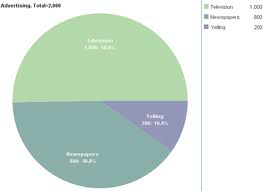
MONTANA |
VIDIN |
DOLJ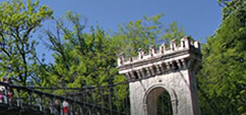 |
Interactive map |
| CULTURAL-HISTORICAL RESOURCES | CULTURE AND RELIGION | FOLKLORE, CRAFTS AND TRADITIONS | EVENTS | TOUR PACKAGES |
Trends in cultural tourism development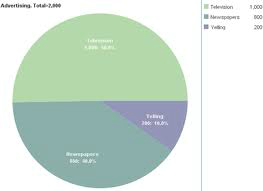
Cultural-cognitive touristic trips (CCTT) are emerging as ones of the most successful types of modern travel. They grow quickly and cover more areas and fields of social and economic life. They account for about 37% of all travels and the demand is growing by 15% annually. This demonstrates the importance of the CCTT market. Their importance is complex and versatile. It is recommended that cultural values to bear the maximum benefits through the development of CCTT and turning them into cultural attractions. According to the World Tourism Organization (WTO) CCTT represent between 18% and 25% of the outgoing tourist flow, as the expectations are for the increasing their share. Forecasts of WTO are explicit and that in 2020 CCTT will have a leading role in the world. In a certain sense, cultural tourism is elitist type of tourism. It attracts tourists with higher education and more specific interests in particular - with an affinity to history. In this sense, the geography of tourism is closely related to the science of history, and this is due to the fact that besides the results of historical and archaeological research it is needed to be considered and geographical parameters of the location of historical sites - both now and in the age in which they were created. The review of the scientific literature in search of information about the tourist profile, seeking for the cultural tourism product can be summarized in the following several key features: ▪ A higher level of education and culture; ▪ A high level of solvency and therefore tend to spend more; ▪ Prolonged stay in the visited destination; ▪ Elderly (over 48 years ) tourists for whom the leading factor in the choice of travel is not value for money, but they are looking for the price for the time they are spent (value – time); ▪ Deliberate attempt to contact and communicate with the local host population; ▪ Intent for better understanding of the culture, traditions, customs, etc.; ▪ Make other smaller and short trips into the interior in addition; ▪ Stronger and positive perceptions (different motivations), interests and attitudes. Tourists can be distinguished into two groups, requiring different marketing approach: • Those with main purpose of getting acquainted with the cultural heritage and contemporary culture of a region; • Those with a different purpose of travelling, and regardless of this they include visits to cultural and historical sites. Of course this distinction is subjective to some extent. Over the past few years more and more has been increased the interest and expanded the circle of tourists of cultural tourism, by changing consumer culture and consciousness for the importance of cultural heritage in tourist destinations. Cultural tourism is developing as one of the most successful industries in different countries of the world. Basis for its approval is primarily the potential of cultural heritage, which is seen as a strategic source of general socio-economic development of different regions. According to international researches, culture is one of the main motivating factors for tourist trips in the world. For the different types of tourists qualities influencing the attractiveness of tourist destinations are their cultural and social characteristics. Fashion, customs and traditions also affect the behavior of consumers of tourist services. Greatest interest to tourists causes a number of cultural elements of the nations. History Cultural potential of the destination is expressed in its history. The presence of unique historical sites determines the successful development of tourism. Acquainting with the history and historical sites is the strongest motive for tourists influencing their behavior. Historical heritage of the destination needs no introduction to the tourist market. Interesting innovation to attract tourists in heritage with the presentations of the historical heritage is the inclusion in the global special shows, which are distributed in Europe and the Mediterranean countries. Typical for them is the accurate reproduction of the history using special effects. Religion The oldest type of travel known to man for thousands of years is the pilgrimage. Motive for pilgrimage is the desire to visit religious centres, religious rituals and holy places like Jerusalem and Mecca, known in the particular religion. Series of monuments culture and architecture attract tourists from around the world, forming tourist interest and influence their behavior. These include the cathedral Notre Dame de Paris in France, St. Peter in Italy, numerous churches and monasteries in Bulgaria (the Rila monastery, Bachkovski, Troyan, Aladza, Transfiguration, Boyana Church, etc.). Music and dances The musical potential of the destination is a major factor in attracting of tourists. Famous festivals annually collect thousands of participants. Many resort hotels acquaint their guests with national music during the entertainment programmes, folklore evenings and concerts. Records of national music, the sale of which is common in most tourist centres, in a unique way acquaint tourists with the culture of the people. Ethnic dances are a characteristic element of national culture. Practically every destination has its own national dance. A clear example of dances, exponents of the national culture of the peoples are: Bulgarian horo (chain dance) and ratchenitsa, Greek Sirtaki, Russian kazachok, Viennese waltz, Polish polka, Japanese ballet, Hungarian Csardas, Turkish belly dance and etc. National cuisine National cuisine represents an important element of the culture of destination. Tourists love to try the national dishes of the country in which they travel. Specifics of the national cuisine and its quality leave memories not exactly for the vacation, but for the destination itself. Of particular interest to tourists are the restaurants offering a menu of Bulgarian cuisine in harmony with national traditions and folklore elements. Folk crafts Each destination that takes tourists is bound to offer a great assortment of souvenirs, made by local craftsmen. Souvenirs are good memory for the country. A souvenir which is not made in the host country loses its value and is considered a forgery. To identify the users of cultural tourism it is possible to use the various approaches: socio-demographic, behavioral and motivational in the application of which can be differentiated these types of travellers: Type А - THE PURPOSEFUL CULTURAL TOURISTS – For this type of travellers, a leading motive is the cultural potential that a destination has to offer, museums, galleries, festivals, folk art. Very often they are attracted to a particular place for the holding of a particular festival or concert or festival. Leading motive for them may be the participating in a cultural program aimed at developing and improving personal skills in a particular area, such as folklore. In these cases there is a subset of cultural tourism, the so-called creative tourism. Type B - THE SIGHTSEEING CULTURAL TOURISTS - For this type of tourist cultural events are an important reason but their behaviour is different to that of the representatives of Type А. they focus more on recreation and less targeted to studying the cultural potential of the destination. Type С - THE CASUAL OR INCIDENTIAL CULTURAL TOURISTS - For this type of tourist cultural reason is secondary even insignificant, but while already on tourist place or destination it is possible for them to visit a certain artefact or concert where the access is free. Type D - CULTURE-AVERSE TOURISTS – This type consist of travellers who are not attracted by the visiting cultural attractions and prefer to concentrate over the recreation or sport activity, or visiting friends.
2. Trends for cultural tourism development Cultural tourism is a traditional practice that has been developed in the ancient times and continued in modern times. Origin of cultural tourism is documented during the 3rd millennium before Christ, in the papyri of Ancient Egypt. Related spiritual and intellectual needs of the people are the basis for its periodic re-actualization during the time. Today, various forms of cultural tourism are realized in the different latitudes on the world. Leading are mainly the countries with preserved cultural-historical heritage, where cultural loci are identified. LoCuS is an acronym that means Local Cultural System, i.e. an area which by means of sharing values, cultural resources, territory, and infrastructure systems is able to combine different elements of the potential tourist offer, intended for a certain market target group. This is complex concept that unifies the territory with its cultural resources, the relevant subject-matter and the target market segment. LoCuS means: o a system based on historical, cultural, ethnic and natural identity of certain locations (=LOCAL); o a concept for attracting visitors interested in getting acquainted with the cultural values of the towns and villages, other than those they live in with the purpose to obtain new information and gaining new experience to satisfy their cultural needs (= CULTURAL); o integrated combination of resources, related to the historical and cultural traditions in the visual and performing arts, in the creative industry, organized and related to each other by sharing of a common vision of the region, of strategies for its development, of the target market segment (= SYSTEM). Cultural loci, such as Paris, London and Rome are attracting annually up to 15 million tourists, and the largest city in Turkey – Istanbul is visited by 8 million tourists. Separate anthropogenic sites such as Taj Mahal in India, the Acropolis in Athens or the ancient Troy are a guide for approximately 5 million tourists annually. The most visited site in our country is Rila Monastery - 0, 6 million tourists annually. Cultural tourism in our country has a share of 20%, which is almost half in comparison with the share in Greece and Italy. The aspects for enlargement, intensification of the forms of cultural tourism and the opportunities for including more cultural-historic sites and traditional cultural events in our country are putting a series of problems, which are connected with this. Analysing them and detection of the contemporary aspects for the practice of the cultural tourism predetermined and the purpose of its work – to outline the responsibilities and reveal the possible right decisions for them. By the critical analyse of the problems the work is a reflection on the modern rational usage of the present sites and events of culture and therefore a disclosure of alternative ways to the contemporary cultural tourism. The development of anthropogenic objects and phenomena of culture is a process where different public institutions, research units, tourist companies and even individuals are involved. In their work it is possible to allow some differences resulting from the different objectives pursued and formed guidelines of attitude toward cultural heritage. Socialization is a process by means of which are involved the social and culturally important traits of cultural heritage. With it is approved the value of the creation, while are adjusting the consumer social patterns in society and are establishing new moral values. Thus, the ultimate goals of the process of socialization withstand the everyday problems and indirectly impose guidelines to rediscover objectified achievements of the human spirit in its efforts to subjective freedom. Furthermore, the showing out of value qualities of objects of culture, i.e. impact positively and are basis for achieving consciousness of autonomy - a promising target culture. Aspects of socialization of the cultural phenomena are a precondition for application of the mechanism creating patterns and models for imitation and ideals for behaviour. In tourist practice the imitation has a stage structure. The order of application is connected with the first stage, with the striving to understand the cultural phenomenon which is upgraded with the efforts for mastering of the new type of behaviour. Socialization is a factor for bringing the achievements of culture to general usage. Its practical application is related also to the implementation of certain technical activities. For most of the cultural-historical sites it is inevitable activities such as – research, development and conservation, construction of transport infrastructure, accommodation facilities and regulating of the mode of their use, maintenance and control. Targeted implementation of responsibilities to the cultural-historical heritage is warrantable condition for intensifying socio-economic activities in different regions of the country. With the development of the forms of cultural tourism there is a direct and indirect impact on employment and increase the income of the population. Cultural tourism may indirectly have influence on the production of goods and services directly addressed to the cultural tourism. Today the size of the share is11-12%. Its increase is a potential that can effectively influence the regional economy. The combination of direct and indirect influence in the scheme of tourist expenditure determines the overall effects over the local economy. Striving to realize larger purchases and sales in the region determines the increase of the multiplier effect. Furthermore, if the local economy produces basic goods and services to satisfy tourist needs the effect will be more significant. Responsibilities for the development of cultural tourism represent a complex of searching for answers to the variety of challenges and tasks. For this practice to be competitive on the tourist market it is needed a focused work and coordination of the different actors involved in its organization and implementation. There are real opportunities for return on investment and effort for socialization and promotion of cultural heritage. With the overall implementation of the responsibilities to the cultural tourism, its share on the tourist market may become equal to the indexes of countries such as Italy, France and Greece. In its report "Tourism 2020" World Tourism Organization foresees growth of the global tourismfrom565 million international visitors in 1995 to1.006 million in 2010 and to over 1561 in 2020; and for Europe-of 338million international visitors in 1995 to 527 in 2010 and 717 million in 2020. This means an average annual growth of 3%. Cultural tourism is a socio-economic phenomenon and has a complex character, consisting in a complex unity of tourist industry and cultural attraction Based on this some important trends in the development of cultural tourism are formed: • Cultural heritage expands its content for to include besides the cultural monuments, and also other values: traditional agricultural practices, social events and traditions, local cuisine and crafts, intangible values and others, forming a cultural environment. • Cultural heritage expands its territorial range to include the values of higher and higher levels: historic towns, cultural landscapes, cultural routes-with local, national, continental, even transcontinental range; • Cultural heritage manifests itself not only as a spiritual value that should be protected, but also as a unique resource that can and should be used for sustainable development, under the rules of the economic game and the laws of the market. As an essential tool for this seems precisely to be the cultural tourism. Based on this several important conclusions are formed: ♦ An integration and close economic relationship is provided between culture and tourism. Resolution from the 4th Conference of the Council of Europe (Helsinki, 1996) stresses that "revenue from cultural tourism can contribute significant funds for the maintenance and preservation of cultural heritage" as referred to the above logic: if cultural heritage is able to stimulate tourism industry, and tourism it in turn should assist detection, protection and promotion of their own cultural and historical resources. ♦ Irreplaceable trade value acquires complete cultural-historical packages, including cultural, tourist, transport and information infrastructure, complemented by attractive by-products and activities (festival attractions, trade, cuisine, fishing and hunting, etc.). Cultural values, most often integrated with natural values are in the heart of this system, treated as a complete tourist product, with renewing infrastructure around it that makes it permanently attractive. ♦ The image of the village-within-country becomes a marketable commercial product to be launched worldwide with comprehensive marketing and advertising, because it creates a favourable climate for investment and tourism. Cultural heritage is a key element of the image. The main trends related to the development of cultural tourism that are present and will approve in future are: · travels as destinations will be closer to their homes with predominance of the national travels towards distant destinations; · destinations with tangibly higher value and favourable currency convertibility will be preferred, since the price will be a major thrust of competitiveness; · the number of purchases in the last minute will increase due to the fact that an increase in uncertainty will cause tourists to postpone the decision to purchase and look forward to special offers; · focusing on costs will be essential for companies who want to maintain their competitive advantage; · cooperation between the public and private sector and tour operators will be of strategic importance within the competition between destinations and economic sectors. Among the main priorities for cultural tourism development worldwide are indicated: › Economic profitability. Tourists spend more and achieve a longer stay. › Using available assets (existing), established in the near or distant past, i.e. establishment of a core of attraction of tourists is needed. This facilitates the forming of tourist product and its differentiation. › Prerequisite for development of a wider range of specialized types of tourism – religious, educational, festivals, museums. |
MOST VISITED
PUBLICATIONS
TOURIST INFORMATION
Where to sleep
Where to eat
Transportation
Recent archaeological excavations, research, restoration
Links
|
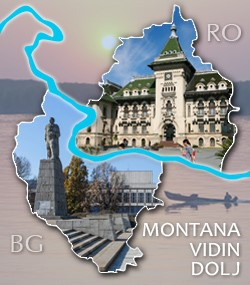

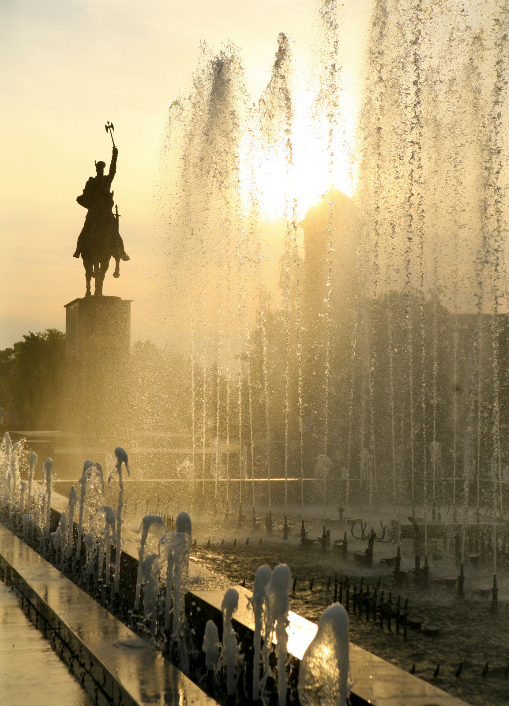
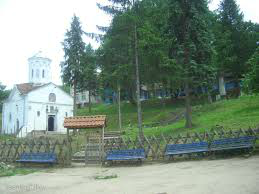
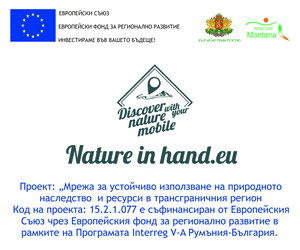
 Google Play
Google Play App Store
App Store 